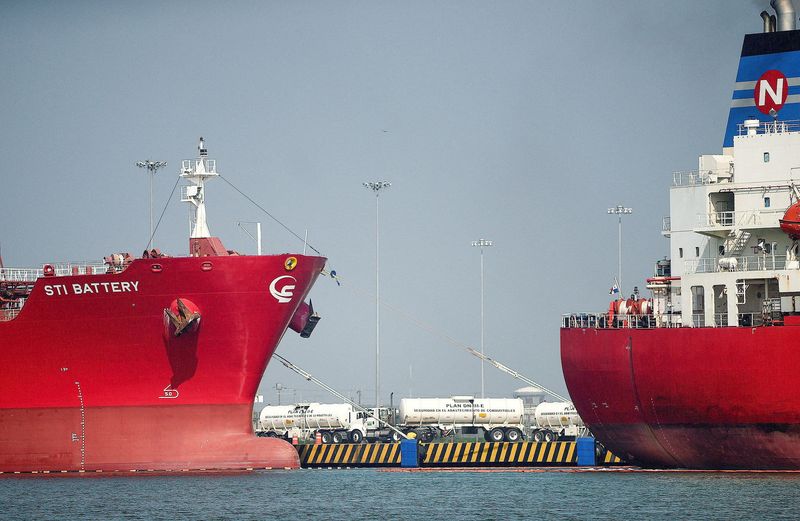By Erwin Seba
HOUSTON (Reuters) -Oil prices climbed more than 2% on Wednesday, driven by fears of lengthy production shutdowns in the U.S. offshore oil patch, which Hurricane Francine was barreling through on the way to landfall in Louisiana.
Brent crude futures settled at $70.61 a barrel, up $1.42, or 2.05%, on Wednesday. U.S. crude futures finished up $1.56 a barrel, or 2.37%, at $67.31.
Oil prices shook off an increase in crude inventories reported by the U.S. Energy Information Administration on Wednesday morning.
Crude inventories rose by 833,000 barrels to 419.1 million barrels in the week ending Sept. 6, the EIA said, compared with analysts' expectations in a Reuters poll for a 987,000-barrel rise.
Crude stocks at the Cushing, Oklahoma, delivery hub fell by 1.7 million barrels in the week.
"A rather unexciting minor build to crude inventories has been overshadowed by yet one more draw at Cushing," said Matt Smith, lead oil analyst for Kpler. "EIA data show Cushing inventories now drawing nine of the last 10 weeks, down to the lowest level since early November last year."
Both oil benchmarks tanked on Tuesday, with Brent falling below $70 to its lowest price since December 2021 and U.S. crude dropping to its lowest since May 2023, after OPEC revised down its 2024 oil demand growth forecast for a second time.
Concern about Hurricane Francine disrupting output in the United States, the world's biggest producer, also lent support, other analysts said.
"Next week I suspect the statistics will be impacted by Hurricane Francine interrupting tanker flow through the Gulf of Mexico," said Andrew Lipow, president of Lipow Oil Associates.
The U.S. Bureau of Safety and Environmental Enforcement said 39% of crude oil production in the Gulf of Mexico was shut by Wednesday as companies evacuated crews out of Francine's path.

The bureau also said 49% of natural gas production from the Gulf was shut by the storm.
The U.S.-regulated northern Gulf of Mexico accounts for 15% of total U.S. crude oil production and 2% of dry natural gas production, according to EIA.